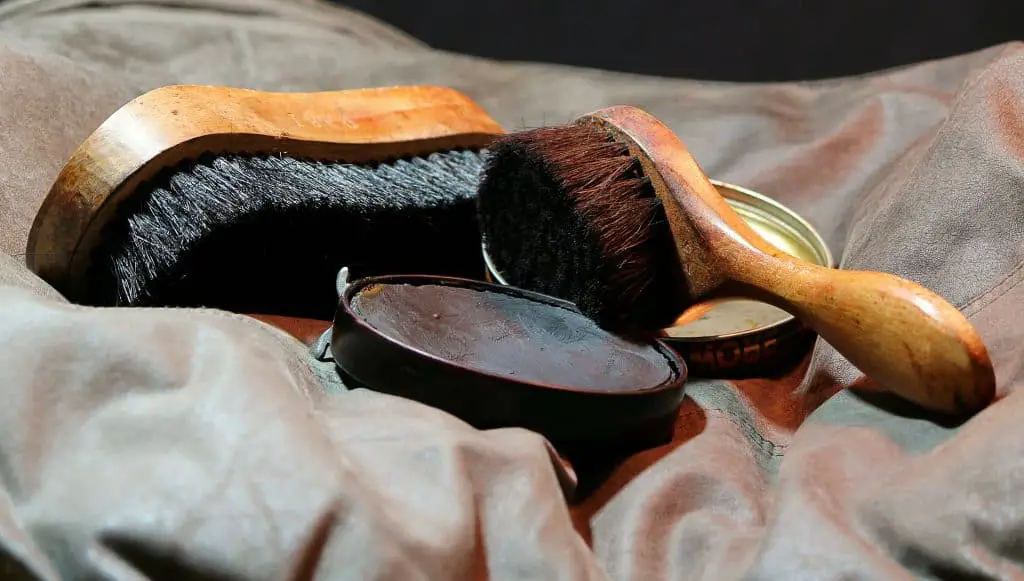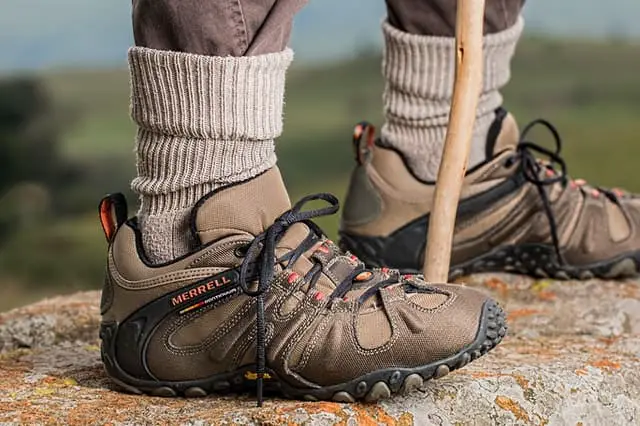Gore-Tex is one of the most popular technologies for outdoor gear and jackets. Another option that I spent some time researching recently is Thinsulate.
Thinsulate was designed by 3M and is known for its improvements to insulation and waterproofness.
We were curious enough to take a deeper look and see how it compares to the well-known Gore-Tex.
In this article, we’ll review the main similarities and differences between the two popular brands of Thinsulate vs GORE-TEX.
Thinsulate and Gore-Tex Comparison Table
Here’s a table that goes over certain features like water resistance and windproof capabilities between Gore-Tex and Thinsulate products.
| Thinsulate
|
Gore-Tex
|
|
| Insulation
|
All products
|
Some products
|
| Water-Resistant
|
Some products
|
Some products
|
| Windproof
|
Some products
|
All products
|
| Flame-Resistant
|
Some products
|
No
|
| Odor-Resistant
|
Some products
|
No
|
What is Thinsulate?
Thinsulate is a type of insulation that is made by 3M. It is used in a variety of outerwear gear including jackets, pants, footwear, hats, and gloves.
The main benefit of Thinsulate is that it keeps you warm. It is made with thin, lightweight material so it is not bulky or uncomfortable to wear. Thinsulate is a synthetic material.
There are several types of Thinsulate that offer different benefits depending on the activities you will be doing while wearing the gear.
Original Thinsulate (Type C)
The first type of Thinsulate that was created is still used today. This kind of insulation is made with very fine microfibers that keep the air inside. Original Thinsulate traps the body heat but lets out moisture so that sweat can evaporate.
It is a thin, lightweight material that keeps you warm when participating in outdoor activities.
Water Resistant Thinsulate
This type of Thinsulate is made with hydrophobic fibers that repel water instead of absorbing it. The fibers are treated with a silicate material to improve their ability to resist moisture.
Water-resistant Thinsulate is designed for use in the rain or snow as well as activities where you may be exposed to water such as fishing or boating.
Flame Resistant Thinsulate
This kind of Thinsulate is created with durable, flame-resistant fibers. They are not flameproof which means the user still needs to be cautious while wearing this type of gear.
Designed for customers that have occasional accidental exposure to flames, it is ideal for people who work in the oil and gas industry or in electrical jobs.
Featherless Thinsulate
An alternative to natural down material, this kind of Thinsulate is made with a synthetic fiber. Unlike down, which loses its insulation abilities when wet, featherless Thinsulate will still keep you warm if it is exposed to water.
Featherless Thinsulate is a great option for people who are looking for animal-friendly insulation. Since they use recycled insulation without feathers, they provide an animal-free alternative to down jackets. Most of their featherless products are made for the outdoors like jackets or vests.
Stretch Thinsulate
Created to provide warmth and comfort while users are engaged in any outdoor activity, stretch Thinsulate moves with your body. The elastomeric insulation provides a stretchiness in the gear making it ideal for motion-based pursuits like running.
Odor Resistant Thinsulate
Made with X-STATIC fibers, this kind of Thinsulate is designed to resist odors that can build up during physical activity. It uses a precious metal technology that prevents odors from settling into the fibers, keeping the user fresh even after long hours of exertion.
What is GORE-TEX?
GORE-TEX is a type of material that is used in outerwear like jackets, pants, hats, gloves, and footwear. It is an exterior layer that acts as a membrane and keeps the wind from passing through the clothing.
There are two main types of GORE-TEX: Original and Infinium.
Original GORE-TEX
This kind of material is made for wet conditions. It is not only windproof, but waterproof as well, so it can be used to keep you dry while it is raining outside.
Infinium GORE-TEX
This type of material is designed for drier conditions and is to be used when you are not expecting rain. It provides the same level of windproofing as the original material but is not waterproof.
Similarities Between Thinsulate and Gore-Tex
The main similarity between these two types of material is that they are both designed to keep you comfortable when outside. Thinsulate and GORE-TEX are most popular among people who regularly participate in outdoor activities like hiking, cycling, and running.
Another similarity between the two is that some of the products offer water resistance. The water-resistant Thinsulate and the original GORE-TEX are each made with materials that repel water from the fibers to keep you dry.
Differences Between Thinsulate and Gore-Tex
The major difference between these two products is that Thinsulate is a type of insulation and GORE-TEX is a type of membrane.
While the main function of Thinsulate is to protect you from the cold, GORE-TEX is designed to protect you from wind and rain.
Another difference is that some GORE-TEX products offer benefits such as flame resistance and odor resistance, while Thinsulate products do not.
Which Brand Performs Better?
Consider the type of activities that you will be participating in when you are outdoors. If you will be spending a lot of time in cold weather, Thinsulate is best for keeping you warm.
On the other hand, if you intend to be outside in the rain and wind a lot, your best choice is GORE-TEX.
Frequently Asked Questions
If you’re looking for more information, here are some simple answers to questions you may still have.
Is Thinsulate Waterproof?
Most products with Thinsulate have water-resistant properties that work to keep the gear warm and waterproof. You should be able to stay dry without having to worry about extra weight on your outdoor gear.
Is Gore-Tex a Good Insulator?
Gore-Tex is designed with a thin membrane on the outside, so it’s not a great insulator when compared to alternatives like Thinsulate. It will perform well at keeping you cool and dry in most conditions.
Conclusion
If you’re still undecided on choosing between Gore-Tex and Thinsulate, here’s a simplified breakdown.
Choose Gore-Tex if:
- You need to stay cool and dry in wetter conditions.
Choose Thinsulate if:
- You need to stay warm while in colder conditions.
Hopefully, now that we know everything important that there is for both options, it’ll be a much easier decision for you to make.





